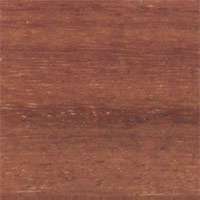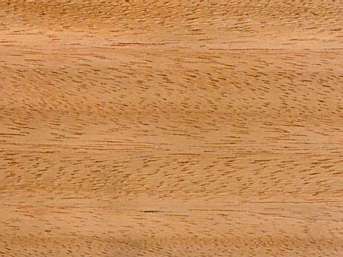  
Dahoma (Piptadeniastrum africanum)
Family: Leguminosae
Common names: African greenheart, Agbion, Agboin, Akasanumu, Atui, Banzu, Bi-eh, Bocachico, Bokundu, Bokungo, Bokungu, Bukundu, Carabali, Carbonero, Chen, Dabema, Dahoma, Dandad, Dane, Dubima, Ekhimi, Ekhivi, Elae, Elany, Eran, Erundu, Gau, Guli, Hediondo, Huilca, Itoumbe, Jondo, K-kuperb, Ka-bari, Koungou, Likundu, Mbele, Mbele-guli, Mbeli, Mpewere, Mugeye, Musese, Mussasae, N'singa, N-go, Nga, Odan, Odane, Odannan, Odanwoma, Redwood, Sanga, Singa, Tarahuilca, To, Tom, Toum, wenga
Distributed in: Angola, Cameroon, Central African Republic, Congo, Equatorial Guinea, Gabon, Ghana, Guinea, Ivory Coast, Liberia, Namibia, Nigeria, Senegal, Sierra Leone, Sudan, Uganda, Zaire (Africa)
Distribution overview: The species occurs in tropical West Africa, from Senegal to Angola and across the Congo region to Uganda. It usually grows in mixed deciduous and evergreen forests, and is often found as single trees on farmlands. The species coppices well.
Common uses: Boat building (general), Boxes and crates, Bridge beams, Bridge construction, Bridge joists, Building materials, Cabinetmaking, Canoes, Charcoal, Cooperages, Decks, Domestic flooring, Flooring, Framing, Fuelwood, Furniture, Heavy construction, Interior construction, Joinery, Light construction, Marine construction, Mine timbers, Moldings, Paneling , Parquet flooring, Particleboard, Partitions, Plywood, Posts, Pulp/Paper products, Railroad ties, Sporting Goods, Sub-flooring, Truck bodies, Turnery, Vehicle parts, Veneer, Veneer: decorative, Wainscotting
Environment profile: Status unknown due to inadequate information
Tree size: Trunk diameter is 100-150 cm
Colors: the heart isWhite to cream, Yellow to golden-yellow to orangeand the sapwoodWhite, White to yellow.The grain isStraight, the textureUniformand the lusterPronounced
Natural durability: Very durable, Vulnerable to attack by powder-post beetles
Odor: Unpleasant odor when freshly cut
Odor may be detectable when the wood is re-wetted
Kiln Schedules: UK=A US=T2D4/T2D3 Fr=1
Drying Defects: Slight surface checking, Tendency for some stock to collapse and distort during drying
Ease of Drying: Variable results.
Tree Identification: Bole/stem form is straight
Comments: General finishing qualities are rated as good Tendency to split during felling Timber in the green condition may promote corrosion in iron and iron compounds
Blunting Effect: Very pronounced blunting in sawing
Boring: Fairly easy to very easy
Carving: Respond well to ordinary tools in carving, with moderate blunting effect on cutting edges
Cutting Resistance: Sever blunting effect on saw-teeth
Gluing: Moderate gluing properties
Mortising: good
Moulding: Tends to pick up during moulding operations unless reduced cutting angle is used
Movement in Service: Tends to pick up during moulding operations unless reduced cutting angle is used
Nailing: Pre-Boring may be necessary , Takes nails well
Planing: Very Good to Excellent
Resistance to Impregnation: Sapwood is moderately resistant
Resistance to Splitting: Satisfactory
Response to hand tools: Responds well to hand tools
Routing recessing: Routing is difficult
Sanding: Fairly Easy to Very Easy
Veneering qualities: Easy to cut, There is slight to moderate drying degrade and the potential for buckles and splits
Steam bending: Moderate steam bending characteristics
Screwing: Pre-boring recommended, Screwing yields good results; Turning: Works well in turning operations, but interlocked grain may interfere with machining
Painting: Good; Polishing: Satisfactory; Staining: Very Good to Excellent; Varnishing: Good;
- Numerical data Metric
- Numerical data English
- Strength properties
- References
 |
 |
 |
 |
| Item |
Green |
Dry |
Metric |
| Specific Gravity |
0,53 |
0,63 |
|
| Density |
|
689 |
kg/m3 |
| Bending Strength |
746 |
1105 |
kg/cm2 |
| Crushing Strength |
|
97 |
kg/cm2 |
| Hardness |
|
742 |
kg |
| Impact Strength |
86 |
78 |
cm |
| Shearing Strength |
|
162 |
kg/cm2 |
| Stiffness |
105 |
129 |
1000 kg/cm2 |
| Tangential Shrinkage |
8 |
|
% |
| Radial Shrinkage |
4 |
|
% |
| Weight |
705 |
657 |
kg/m3 |
| Maximum Load |
0,35 |
0,63 |
cm-kg/cm3 |
| Toughness |
|
279 |
cm-kg |
| Static Bending |
|
675 |
kg/cm2 |
|
 |  |  |  | | Item | Green | Dry | English | | Bending Strength | 10615 | 15718 | psi | | Crushing Strength | | 1392 | psi | | Density | | 43 | lbs/ft3 | | Hardness | | 1636 | lbs | | Impact Strength | 34 | 31 | inches | | Maximum Crushing Strength | 5520 | 8465 | psi | | Shearing Strength | | 2315 | psi | | Static Bending | | 9614 | psi | | Stiffness | 1503 | 1843 | 1000 psi | | Toughness | | 243 | inch-lbs | | Work to Maximum Load | 5 | 9 | inch-lbs/in3 | | Specific Gravity | 0.53 | 0.63 | | | Weight | 44 | 41 | lbs/ft3 | | Radial Shrinkage | 4 | | % | | Tangential Shrinkage | 8 | | % | | Volumetric Shrinkage | 14 | | % | |
Density (dry weight) = 38-45 lbs/cu. ft. 0
Density (dry weight) = 46-52 lbs/cu. ft. 0
Max. crushing strength = high 0
Bending strength (MOR) = medium 0
Hardness (side grain) = medium 0
Shrinkage, Tangential = fairly large
Modulus of Elasticity (stiffness) = medium
Max. crushing strength = medium
Hardness (side grain) = hard
Density (dry weight) = 31-37 lbs/cu. ft.
Bending strength (MOR) = high
Modulus of Elasticity (stiffness) = low
Shrinkage, Radial = small
Modulus of Elasticity (stiffness) = very low
Bending strength (MOR) = low
Toughness-Hammer drop (Impact Strength) = low
Shrinkage, Tangential = large
Shearing strength (parallel to grain) = very high
Shrinkage, Tangential = moderate
Shrinkage, Radial = fairly large
Shrinkage, Radial = very small
Shrinkage, Radial = moderate
Shearing strength (parallel to grain) = high
Shrinkage, Radial = large
Modulus of Elasticity (stiffness) = high
Density (dry weight) = 53-60 lbs/cu. ft
Bending strength (MOR) = very high
Work to Maximum Load = very low
Shrinkage, Tangential = small
Shearing strength (parallel to grain) = very low
Shearing strength (parallel to grain) = medium
Shearing strength (parallel to grain) = low
Resists denting and marring
High weight
High in density
High bending strength in air-dry condition (about 12% moisture content)
Hardness = medium
Hardness (side grain) = soft
Crushing strength = high
Compression strength (parallel to grain) = high
Banks, C.H. and J.P. Schoeman. 1963. Railway Sleeper and Crossing Timbers. Bulletin No. 41, Republic of South Africa. The Government Printer, Pretoria, South Africa.Banks, C.H., Schoeman, J.P., Otto, K.P.,1977,The Mechanical Properties of Timbers with particular reference to South,Africa,South African Forestry Research Institute Bulletin,(Ed.,Schoeman, J.P. 1973 & Otto K.P. 1976,No.48Banks, C.H.,1970,The Durability of South African Wood and Wood Base Building Materials,South African Forestry Journal,No.75Bertin, A., Meniaud, J.,1949,Timbers of the Cameroons,Compagnie Francais du Cameroon,(Transl. by F.Jane)Bois et Forets des Tropiques,1947,Dabema,Bois et Forets des Tropiques,4(4, pp51-4Bois et Forets des Tropiques,1974,Dabema,Bois et Forets des Tropiques,No.156,pp27-38Bois et Forets des Tropiques,1976,Moabi (Baillonella toxisperma,Bois et Forets Tropiques,n0.169, pp37-49Bois, P.J.,1966,The Strength Properties of Tanzania Timbers,Tanzania Forest Div. Util. Sec. Moshi Tech. Note, No.35Bolza, E., Keating, W.G.,1972,African Timbers - the Properties, Uses and Characteristics of 700 Species,C.S.I.R.O. Div. of Building ResearchBolza, E.,1976,Timber and Health,Div. Building Res. C.S.I.R.O. AustraliaChalk, L.,1933,Twenty West African Timber Trees,Forest Trees and Timbers of the British Empire,Part 2Chudnoff, M.,1984,Tropical Timbers of the World,U.S.A. Department of Agriculture, Forest Service, Forest Products,Laboratory, Madison.Cooper, G.P., Record, S.J.,1931,The Evergreen Forests of Liberia,Yale School Forestry Bulletin,31,pp1-153Eggeling, W.J.,1940,Indigenous Trees of Uganda,Govt. Printer Entebbe UgandaErfurth, T., Rusche, H.,1976,The Marketing of Tropical Wood A. Wood Species from African Moist Forests,F.A.O. Forestry DepartmentFarmer, R.H.,1972,Handbook of Hardwoods,HMSOForest Products Research Laboratory, U.K.,1955,Kiln-Drying Schedules,Forest Products Research Laboratory, Princes Risborough, Department of,Science and Industrial Research, Building Research Establishment Leaflet,No.42Forests Products Research Laboratory, U.K.,1956,A Handbook of Hardwoods,Forest Products Research Laboratory, Princes Risborough, Department of,Science and Industrial Research, Building Research EstablishmentFouarge, J.,1970,Essais Physiques,Mecaniques et de Durabilite de Bois de la Republique,Democratique du Congo,I.N.E.A.C. Belgium Serie Technique,No.76France - C.T.F.T./C.T.B.,1982,Guide pour le Choix des Essences Deroulables-pour la fabrication du,contreplaque,C.T.F.T./C.T.B. FranceFrance - C.T.F.T.,1977,Promotion of African Timbers - New Species,CTFT,35 LeafletsGhana - Timber Marketing Board,1969,Ghana Hardwoods,Timber Marketing BoardHedin, L.,1930,Etude sur la Foret et les Bois du Cameroun,Haut-Commissaire de la CamerounHMSO.1972.Handbook of Hardwoods.2nd Edition.Revised by R.H. Farmer.Department of the Environment, Building Research Establishment, Princes Risborough Laboratory, Princes Risborough, Aylesbury, Buckinghamshire.Howard, A.L.,1948,A Manual of Timbers of the World.,Macmillan & Co. Ltd. London 3rd ed.Hughes, J.F.,1971,The Principal Timber Trees of Cameroon,Unpublished dataI.U.F.R.O.,1973,Veneer Species of the World,Assembled at F.P.L. Madison on behalf of I.U.F.R.O. Working Party on,Slicing and Veneer CuttingIrvine, F.R.,1961,Woody Plants of Ghana,O.U.P. LondonITTO.1986.Tropical Timber Atlas, Volume 1 - Africa.International Tropical Timber Organization (ITTO) and Centre Technique Forestier Tropical (CTFT, 45bis, Avenue de la Belle Gabrielle, Nogent-sur-Marne Cedex, France.ITTO. New Marketable Species Technical Notes. Prepared by Centre Technique Forestier Tropical (CTFT, Division of CIRAD, 45 bis, Avenue de la Belle Gabrielle, 94736 Nogent-sur-marne Cedex, FranceJay, B.A.,1968,Timbers of West Africa,TRADA, Red Booklet SeriesKeay, R.W.J.1989. Trees of Nigeria.Revised Version of Nigerian Trees. Clarendon Press, Oxford.Keay, R.W.J.,1964,Nigerian Trees Vol.2,Nigeria Federal Department of Forest Research, IbadanKennedy, J.D.,1936,Forest Flora of Southern Nigeria,Government Printer LagosKinloch, D., Miller, W.A.,1949,Gold Coast Timbers,Govt. Printer Gold CoastKryn, J.M., Forbes, E.W.,1959,The Woods of Liberia,U.S.A. Department of Agriculture,Forest Products Laboratory, Madison,,Report No. 2159Kunkel, G.,1965,The Trees of Liberia,German Forestry Mission to Liberia Report,No.3Lavers, G. M. 1966. The Strength Properties of Timbers. Forest Products Research Bulletin, No. 50. Ministry of Technology, Her Majesty's Stationery Office, London.(Green values only)Lavers, G.M.,1983,The Strength Properties of Timber (3rd ed. revised Moore G.L.,Forest Products Research Laboratory, Princes Risborough, Building Research,Establishment Report (formerly Bulletin No.50)Meniaud, J., Bretonnet, F.,1926,Les Bois Coloniaux d'Afrique dans l'Industrie,Publ. de l'Agence Gen. des ColoniesOrganisation for European Economic Co-operation,1951,African Tropical Timber (Nomenclature, Description,OEECPieters, A.,1977,Essences Forestieres du Zaire,R.U.G. Gent BelguimRendle, B.J.,1969,World Timbers (3 Vols.,Ernest Benn Ltd. LondonSaint-Aubin, G. de,1963,La Foret du Gabon,CTFT Publ., No.21Sallenave, P.,1955,Proprietes Phyiques et Mecaniques des Bois Tropicaux de l'Union Francaise,C.T.F.TSallenave, P.,1964,Proprietes Physiques et Mecaniques des Bois Tropicaux (Premier Supplement,C.T.F.T. Publ.,no.23Sallenave, P.,1971,Proprietes Physiques et Mecaniques des Bois Tropicaux (Deuxieme,Supplement,C.T.F.T.Savill, P.S., Fox, J.E.D.,1967,Trees of Sierra LeoneScott, M.H.,1950,Notes on the more Important African Timbers Imported into the Union with,Special Ref. to Port. E.A. Species,Journal of the South African Forestry Association,No.19,pp18-62,[South,African Forestry Journal]Spalt, H.A., Stern, W.L.,1959,Survey of Africa Woods 4,Tropical Woods 17(110) pp42-115Tack, C.H.,1969,Uganda Timbers,Govt. Printer UgandaTakahashi, A.,1978,Compilation of Data on the Mechanical Properties of Foreign Woods (Part,III) Africa,Shimane University, Japan, Research Report on Foreign Wood No. 7Taylor, C.J.,1960,Synecology and Silviculture in Ghana,University College of Ghana Thomas Nelson and SonsTimber Information Assoc. Ltd.,1947,Notes on East African Timbers,TRADA, Timber Information, No.28U.A.C.O. Timber Review,1964,There is a future for Dahoma,U.A.C.O.Timber Review, No.9,p6Uganda Forest Department,1954,Dahoma,Uganda Forestry Department Timber Leaflet, No.8Uganda Forest Department,1954,The Mechanical Properties of some Ugandan Timbers,Uganda Forest Department Timber Leaflet,No.1Uganda Forest Department,1969,The Shrinkage of Some Ugandan Timbers,Uganda Forestry Department Timber Leaflet,No.47Unwin, A.H.,1920,West African Forests and Forestry,T. Fisher Unwin Ltd. LondonVoorhoeve, A.G.,1965,Liberian High Forest Trees,Centre for Agric. Publishing and Documentation, WageningenWood, B., Calnan, D.,1976,Toxic Woods,British Journal of Dermat 94 Suppl. 13
|










